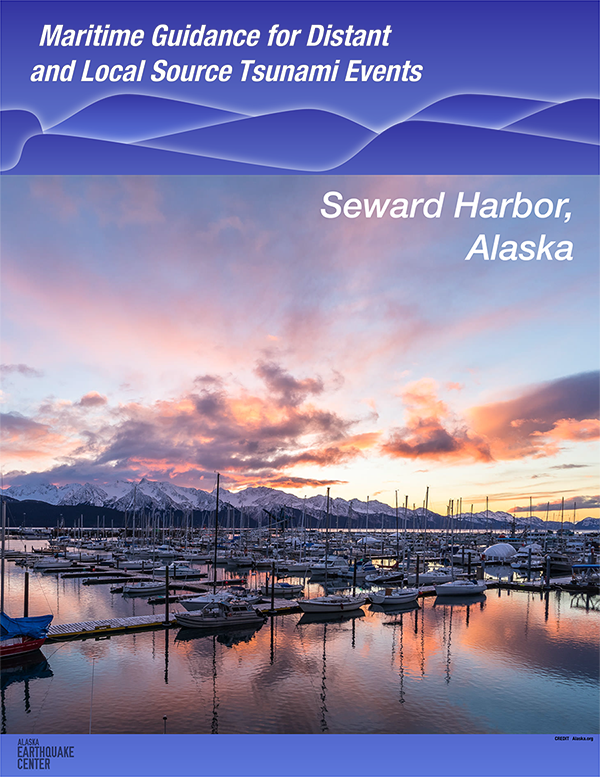Maritime Response Guidance
These reports provide tsunami response guidance for small vessels, such as recreational sailing and motor vessels or commercial fishing vessels. The reports follow the draft guidance developed by the National Tsunami Hazard Mitigation Program and are based on anticipated effects from potential worst-case scenarios involving distant and local tsunamis.
A tectonic tsunami is caused by an earthquake that shifts the ocean bottom, which displaces water. Usually a tsunami is considered distant if it takes more than three hours to reach the observer. On the flip side, a local tsunami may reach the observer in minutes after the first earthquake shock. The tsunami travel time maps for various historical events can be accessed here.
Because of the tremendous distances in Alaska, a tsunami considered local for the western Aleutians could be considered distant for Southeast Alaska. Most of the distant tsunamis in Alaska are those triggered by earthquakes located, for example, along the shores of Chile, Japan, Peru, the Russian Far East, or the West Coast of the U.S. We considered local tsunamis as those originating along the Alaska-Aleutian subduction zone, such as in the Gulf of Alaska or across Kodiak Island. Local tsunamis are extremely dangerous because the first wave can arrive just minutes after the first earthquake shock.
In these response guidance documents we only consider tsunamis caused by earthquake-induced ocean bottom movements. We do not consider tsunamis generated by any landslides, although the information included in the guidance documents could be useful to mitigate those impacts as well.

Published Reports
Chenega Bay
Cordova
Haines/Skagway
Homer
Kodiak
Seldovia
Seward
Sitka
Tatitlek
Unalaska/Dutch Harbor
Valdez
Whittier






